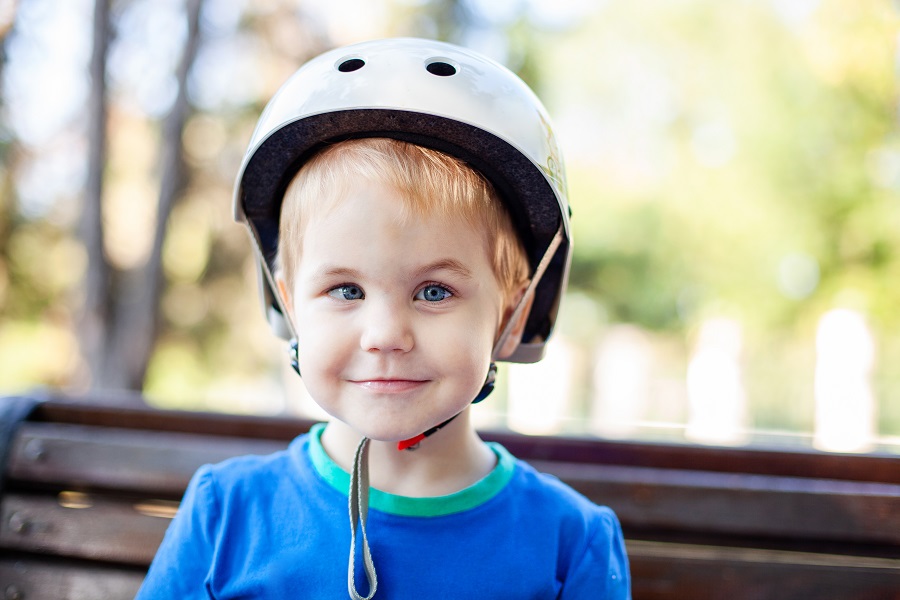Have you noticed your child experiencing an eye turn? Some eye turns are natural, and some are not.
Many eye turns are the result of a vision condition called strabismus, which has several sub-classifications.
From The American Optometric Association:
“Strabismus usually develops in infants and young children, most often by age 3. But older children and adults can also develop the condition. People often believe that a child with strabismus will outgrow the condition. However, this is not true. In fact, strabismus may get worse without treatment. A doctor of optometry should examine any child older than 4 months whose eyes do not appear to be straight all the time.”
Proper eye alignment ensures a child has good depth perception, develops good vision in both eyes, and does not see double or experience other vision problems.
If your child has an eye turn as they approach four or five months of age, it is important to consult with a pediatric eye care specialist.
Strabismus Overview
Strabismus is a vision condition that has gone by many names; eye turn, crossed eye, lazy eye, and wandering eye, to name a few. Whichever name is most familiar to you, strabismus is a failure of the two eyes to maintain proper alignment at all times, which results in an eye turn.
Strabismus is a form of binocular vision dysfunction that must be properly treated to restore both alignment and binocular vision functioning. Improper management may result in cosmetic alignment without functional improvement or worsening symptoms.
In order to determine the best course of treatment, a residency-trained doctor must evaluate several aspects of the strabismus, including: direction (in, out, up, down), frequency, laterality, magnitude, causes, and the impact on binocular vision due to the strabismus.
There are several kinds of strabismus that children and adults experience:
- Esotropia - an inward turning eye
- Exotropia - an outward turning eye
- Hypertropia - an upward turning eye
- Hypotropia - a downward turning eye
One of these types of strabismus is more commonly seen in young children than the others are.

Esotropia in Young Children
The most common type of eye turn in infants and young children is esotropia. Esotropia describes an inward turning of one or both eyes. The eye turn can be either constant or intermittent and can occur when the child looks at something up close, in the distance, or both.
It is not uncommon for eye turns to occur in newborns. Newborns can't always control their eyes and sometimes go cross-eyed. At about two months of age they gain good control over their eye muscles, making eye turns less noticeable. After four months of age eyes crossing or drifting is considered abnormal.
There are two types of esotropia:
1. Infantile esotropia:
Parents observe this as an inward turning of one or both eyes. Infantile esotropia can be associated with a mild neurologic delay and usually develops within the first 6 months of life. Children do not “outgrow” infantile esotropia. In addition to eye alignment, there are a number of visually related sensory-motor deficits that continue into adulthood.
2. Accommodative esotropia:
In children under the age of six, accommodative esotropia is the most common cause of eye-crossing. Accommodative esotropia is caused by excessive farsightedness in which the need to focus causes an inward crossing of the eyes. Children do not “outgrow” accommodative esotropia. Treatment includes correcting the farsightedness. If farsightedness is only partially corrected the eye turn will persist.
Treatment for Eye Turns in Young Children
When an eye turn is observed at any age, it is important to determine the cause of the eye turn, rule out underlying disease, and prescribe appropriate treatment to avoid long-term effects.
It is important that children be seen by an eye doctor who has completed specialized training in pediatric vision conditions, and has the clinical experience necessary for proper diagnosis and treatment.
Your child will receive the care they need with a residency-trained pediatric optometrist. Residency-trained pediatric optometrists complete specialized, advanced training in pediatrics following graduation from optometry school. This is training most optometrists do not have.
The doctors at Artisan Pediatric Eyecare are:
- Residency-trained
- Accepting new patients
- In-network with most insurances
No referral needed. No reason to wait.
Give us a call at (208) 900-3336 and see our Strabismus Treatment page for more information.